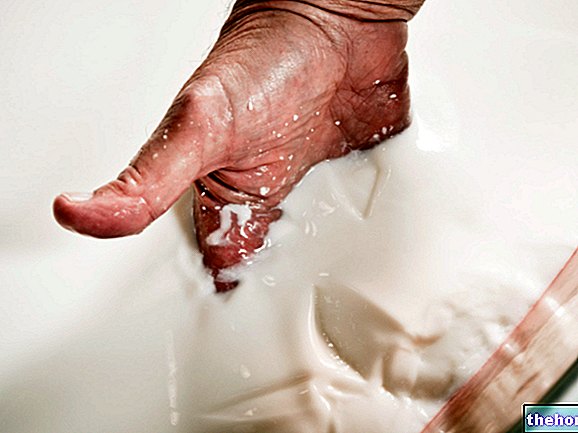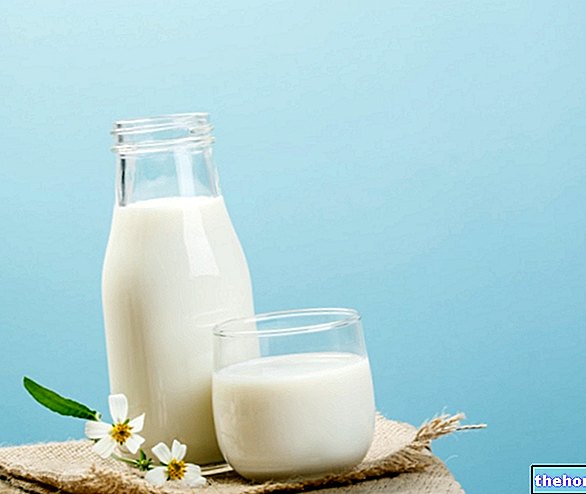Generality
Taleggio is a typical Lombard cheese. It is a typical dairy product of the Taleggio Valley of Bergamo which in 1988, thanks to its "typical" characteristics, obtained the Protected Designation of Origin (PDO).

Before acquiring the name of the area of origin, this derivative of milk was simply called "stracchino".
Taleggio description: taleggio is a cow's milk cheese made from pasteurized whole milk and raw pasta. It has the shape of a parallelepiped, flattened, weighing 1.7-2.2 kg, with a red and light green pigmented surface crust. At the heart of the cheese the paste is more consistent, while towards the crust it acquires more creaminess. Taleggio is obtained by inoculating organic starters but the typical maturation (just over a month) is due to the colonization of bacterial and fungal native strains of the places of maturation.
Taleggio production: the procedure for the production of taleggio cheese involves heating the milk (to about 35 ° C), the grafting of the biological starter (consisting of a portion of acidified whey from the previous day or a technological selection of Lactobacillus with Streptococcus) and then the addition of cow's rennet.

Nutritional values (per 100 g of edible portion)
At this point we wait for the curd to form and, when coagulation is well formed, the first of the two "breaks" of the dough is applied; initially it splits into large pieces and is left to rest for about a quarter of an hour (in order to allow the whey to drain from the block), while the second break occurs by means of the "tas" (a well-sharpened brass instrument).
Immediately after, the curd (reduced to small pieces) is placed in inclined molds and covered with natural or synthetic mats (about 20cm x 20cm x 6cm wide), then left to stew for about 18 hours in rooms with high humidity and a temperature of about 28 ° C. During this process the taleggio is turned several times and branded.
Finally, the forms of taleggio cheese are salted (with salt or brine) and transferred to low temperature environments (slightly> 0 ° C) for aging. This, which lasts about a month, provides for a "further salting and humidification by" sponging "of brine (weekly), as well as a fairly frequent turning.
NB: salting and sponging with brine have the function of keeping the Taleggio crust moist and, at the same time, limiting the onset of molds (especially Penicillium) and some pathogens (including Listeria) favoring the desired surface bacterial proliferation (Staphylococcus, Microbacterium etc.).
Taleggio in the kitchen
Taleggio is a "table" cheese. It has a fat content of almost 48%, the dough is soft, creamy and the crust is thin. It gives off a strong scent that sometimes preserves a pleasant truffle scent.
In addition to consumption aimed at itself, taleggio is frequently used melted on polenta, in first courses in general and on grilled vegetables. The ideal wine pairing for taleggio is with a white like Verdicchio dei Castelli di Jesi or with a red Oltrepò Pavese Pinot Nero.
Nutritional properties
Taleggio is a highly energetic food of animal origin, probably rich in saturated fatty acids and cholesterol (even if the precise reference values are missing), which is why it is not recommended for frequent use and in considerable portions for all subjects in overweight and / or suffering from hypercholesterolemia.
Taleggio is also rich in sodium, an element potentially responsible for the increased risk of arterial hypertension. On the other hand, from a salt and vitamin point of view, cheese is abundant in vitamin B2 (riboflavin) and calcium.
Milk, Dairy Products and Cheeses Asiago Brie Burrata Caciocavallo Rennet Camembert Cheddar Milk Cream Crescenza Emmental Feta Milk Flakes Fontina Herbal Cheeses Lean Cheeses Cheeses rich in calcium Gorgonzola Gouda Grana Padano Gruyere Kéfalair Adapted milk Artificial milk Condensed milk Asphyxiated milk Goat's milk Sheep's milk Rice milk Soy milk Powdered milk and concentrated milk Skimmed and semi-skimmed milk Lactose-free milk Milk Vegetable milk Dairy products Lerdammer Mascarpone Montasio Buffalo mozzarella Mozzarella Whipped cream Cooking cream Fresh cream Parmigiano Reggiano Pecorino Philadelphia Primo Sale Provolone Ricotta Robiola Roquefort Scamorza Sottilette Squacquerone Taleggio Tomino Yogurt OTHER ARTICLES MILK AND DERIVATIVES Categories Alcoholic foods Meat Cereals and derivatives Sweeteners Sweets Offal Fruit Dried fruit Milk and derivatives Legumes Oils and fats Fish and fishery products Cold cuts S pezie Vegetables Health recipes Appetizers Bread, Pizza and Brioche First courses Second courses Vegetables and Salads Sweets and Desserts Ice creams and sorbets Syrups, liqueurs and grappa Basic preparations ---- In the kitchen with leftovers Carnival recipes Christmas recipes Light diet recipes Women's Day, Mum, Dad Recipes Functional Recipes International Recipes Easter Recipes Recipes for Celiacs Recipes for Diabetics Recipes for Holidays Recipes for Valentine's Day Recipes for Vegetarians Protein Recipes Regional Recipes Vegan Recipes




























